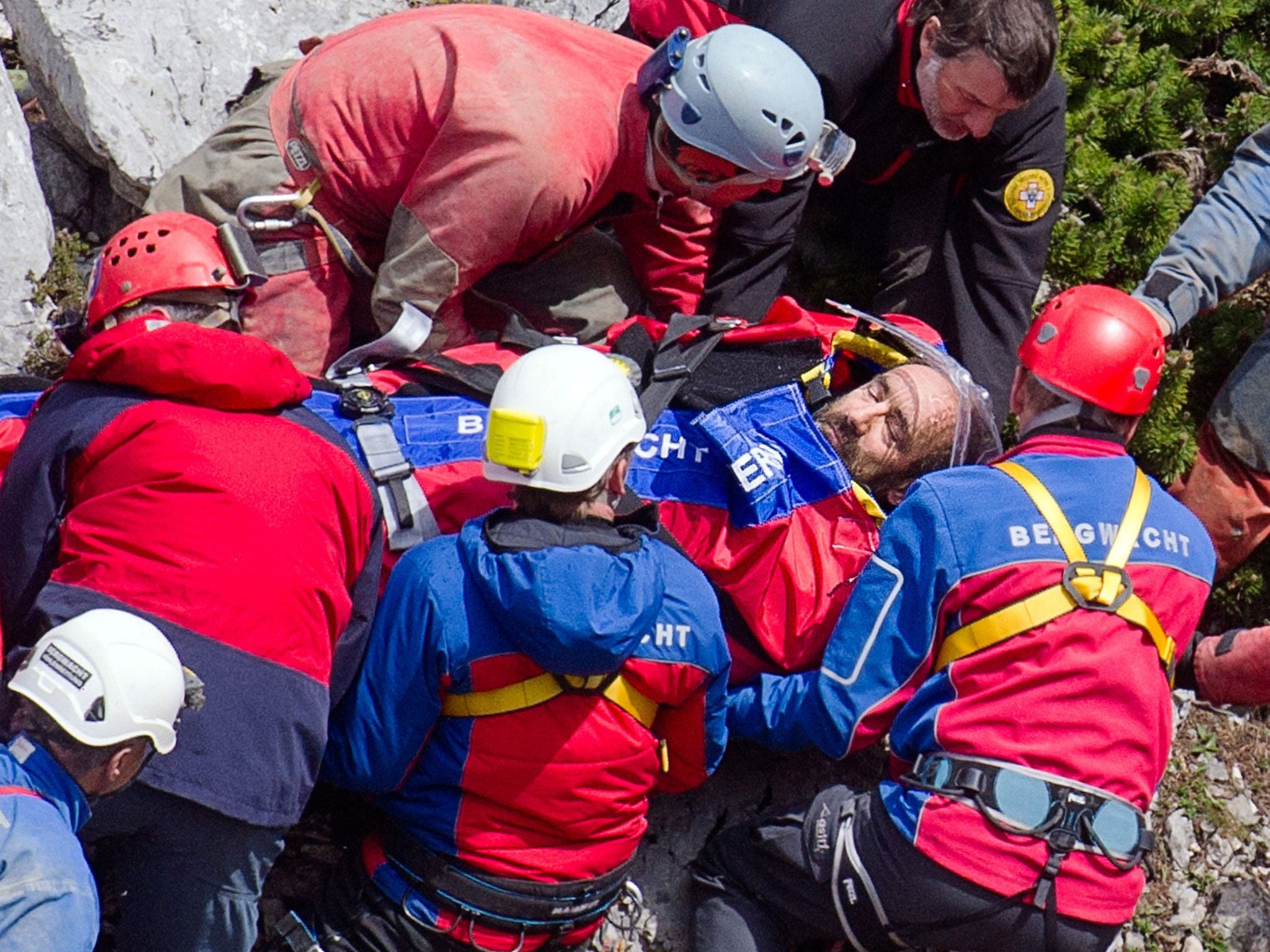Johann Westhauser: Pulled alive from Germany’s deepest cave after two weeks
Experienced caver rescued by 700-strong international team after being injured 1,000 metres underground two weeks ago

After spending nearly two weeks underground, an injured German caver was hauled out of the country’s deepest cavern today by a multinational rescue operation that involved more than 700 people.
Johann Westhauser, an experienced caver, had gone into the Riesending cave system in the Alps with two companions to carry out research and measurements. He was hit on the head during a rockfall on 8 June while about 1,000 metres underground.
After five days of preparations, rescue teams began the arduous task of hauling him through a labyrinth of narrow passages and precipitous vertical shafts.
Rescuers brought the 52-year-old the final 180m to the surface at around 11am yesterday, allowing him to glimpse daylight for the first time in almost a fortnight. According to Bild newspaper, he was airlifted to a hospital in Salzburg shortly after midday.
“A chapter of Alpine rescue history has been written here over the last 12 days,” said the Bavarian mountain rescue chief Norbert Heiland, adding that officials initially doubted whether a rescue was possible given the scale of the cave.
Klemens Reindl, who supervised the rescue operation, said 728 people from five countries – Germany, Austria, Switzerland, Italy and Croatia – had taken part. “It was one of the most difficult rescue operations in the history of the mountain rescue service,” he told the BBC. “The international character of the mission was remarkable.”
“Since the birth of caving, there have been only two incidents of this depth, complexity and difficulty,” the Italian rescuer Roberto Conti added.
A fit expert could climb from the accident site to the entrance in about 12 hours, but rescuers had to haul Mr Westhauser, who reportedly works at the Institute for Applied Physics at the Karlsruhe Institute of Technology, on a stretcher. The cave entrance is on a mountainside, 1,800m above sea level.
Mr Westhauser’s condition has been described throughout as “stable”. Officials did not elaborate yesterday, but Mr Reindl said he “came through the rescue operation well”.
Researchers, including Mr Westhauser, have been exploring the Riesending cave since 2002. Discovered in 1995, its name translates as “giant thing”, reportedly after an exclamation uttered by one of the other explorers, Hermann Sommer. It has been described as “an Everest of the deep”. So far, only 12 miles of its hundreds of tunnels have been mapped.
“The caves are the last undiscovered continent,” Professor Edgar Dachs of Salzburg University, Austria, told The Independent on Sunday last weekend. “You can discover new unexplored territory here like Christopher Columbus.”
Professor Dachs and other scientists believe the Bavarian cave system is almost certainly linked by an undiscovered “super cave” to another 50 mile-long labyrinth comprising some 4,000 caves in Austria called the Kolowrat cave system. “Nobody knows where the link is. Finding it would be a sensation,” Professor Dachs added.
But Bavaria’s top security official said he wanted to make sure the highly publicised rescue did not attract “risk tourism” to the cave. The Interior Minister Joachim Herrmann advocated shutting the cave entrance to ensure it was accessed only by experts. AP
Join our commenting forum
Join thought-provoking conversations, follow other Independent readers and see their replies
Comments